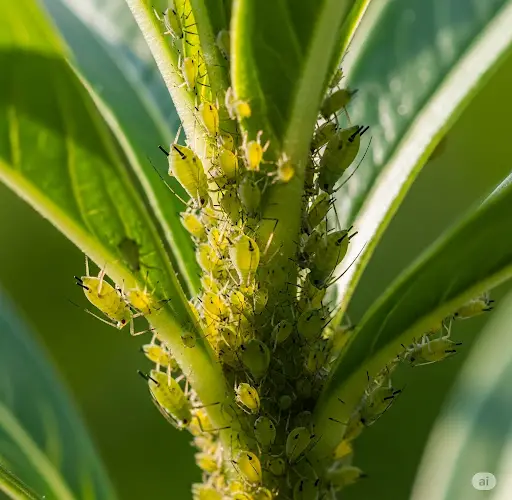Few things frustrate gardeners more than watching healthy plants get overrun by aphids and ants. These pests often appear overnight and quickly begin to damage tender shoots, distort leaves, and slow plant growth. And while many treatments claim to help, some are either ineffective, expensive, or harmful to beneficial insects.
But there’s a simple, inexpensive, and remarkably effective natural remedy that has stood the test of time. Long used in traditional gardens, this homemade solution continues to prove its value today — especially when chemical options are not desired.
Here’s how this time-tested formula works, why it’s so effective, and how to use it safely and correctly in your garden.
The Aphid–Ant Connection: Why You Need to Control Both
Aphids are tiny, sap-sucking insects that target everything from roses and cucumbers to beans and fruit trees. They gather on the undersides of leaves and new shoots, draining nutrients and stunting growth.
Ants, surprisingly, aren’t just innocent bystanders. They actually farm aphids — protecting them from predators in exchange for a sugary substance aphids secrete called honeydew. So if you’re seeing both ants and aphids on your plants, it’s not a coincidence — they’re working together.
To break this destructive cycle, it’s essential to control both pests simultaneously.
The Remedy That Works Better Than Anything Else
The solution is based on a simple blend of household ingredients with natural pest-repellent and insecticidal properties. This recipe has been used by generations of gardeners to get rid of both aphids and ants effectively — without harming plants or pollinators when applied properly.
The Classic Natural Spray Recipe:
Ingredients:
-
1 tablespoon of baking soda (sodium bicarbonate)
-
1 tablespoon of liquid soap (natural or biodegradable, not detergent)
-
1 liter (about 1 quart) of warm water
-
Optional: a few drops of vegetable oil or neem oil for enhanced effect
Instructions:
-
Mix all ingredients thoroughly until fully dissolved.
-
Pour the solution into a spray bottle or garden sprayer.
-
Spray directly on affected plant areas — particularly the undersides of leaves and along stems where aphids cluster.
Repeat the spray every 5–7 days, especially after rainfall or watering, until pests are gone.
Why This Works So Well
-
Baking soda alters the pH on the plant surface, making it inhospitable for soft-bodied insects like aphids.
-
Liquid soap helps the solution stick to insects, suffocating them and breaking down their protective coating.
-
Oil (optional) smothers insects and helps the solution cling longer to plant surfaces.
Together, these ingredients form a potent but safe treatment that targets aphids and discourages ants from returning.
Dealing with Ant Trails and Nests
While the spray handles aphids and surface ants, it’s also important to disrupt ant trails and colonies near your plants. Here are additional steps you can take:
-
Pour boiling water into visible ant nests (use caution and avoid plant roots).
-
Sprinkle cinnamon, coffee grounds, or diatomaceous earth around garden beds and pathways. These natural substances disrupt ant trails and discourage colonization.
-
Create a sugar–borax bait: Mix 1 tablespoon of borax with 3 tablespoons of sugar and enough water to make a syrup. Place it in shallow lids or cotton balls near ant trails — ants take it back to the nest, effectively wiping out the colony.
Caution: Keep borax bait away from pets and children.
When and How to Use the Spray Safely
-
Apply in the early morning or late evening to avoid harming pollinators.
-
Never spray during full sun or extreme heat — the mixture may burn leaves.
-
Always test the solution on a few leaves before full application, especially on young or delicate plants.
-
Rinse off the plants with plain water after a few hours if needed.
Bonus Tip: Strengthen Plants Against Pests Naturally
Healthy plants resist pests better. Support your garden with good practices:
-
Mulch to retain moisture and suppress pests.
-
Avoid over-fertilizing, especially with nitrogen, which attracts aphids.
-
Companion plant with marigolds, garlic, or basil to naturally repel insects.
-
Encourage beneficial insects like ladybugs and lacewings that feed on aphids.
Final Thoughts
Aphids and ants are common summer nuisances, but they don’t have to ruin your garden. This simple homemade spray, combined with a few extra preventive measures, offers a natural, effective solution that works every time.
Instead of reaching for harsh chemicals or giving up on affected plants, give this traditional method a try. It’s affordable, easy to prepare, and safe for you, your garden, and the environment — and it just might become your go-to solution for pest control.


